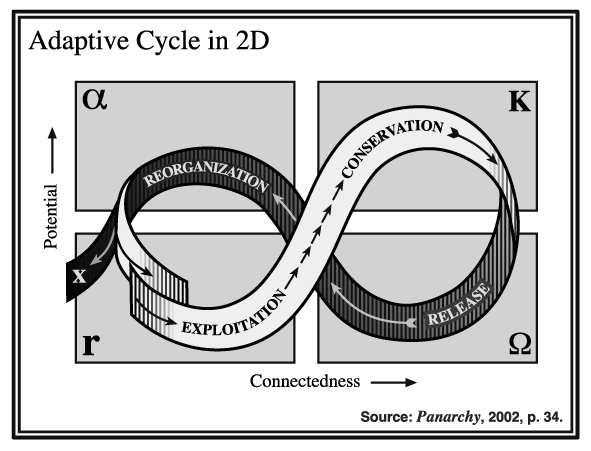3.2 Sustainability
Definitions

Sustainability is a relatively difficult to define concept, mainly for the lack of any significant examples of large-scale, long-lasting sustainability in human history. Further, from a systems perspective (complex dynamics), there are some inherent contradictions in the goals of sustainability.
First, one needs to address the question of what is being sustained. Is it development and economic growth that is being sustained? Because, for many countries, economic development is the way out of poverty for many of its citizens and, for these reasons, many underdeveloped countries have to accelerate growth, which means more consumption of energy for industry, transportation, and the like. If all citizens of the world consumed as much as the average U.S. citizen currently does, we would need another 7 or 8 planet Earth's worth of resources to keep up. As it is, environmental damage due to development, particularly in the energy sector, has already overrun the environment's ability to recharge (trees, grasslands, water usage, CO2 reabsorption, etc.)
Second, concerns the question of whether or not it is first and foremost that the environment be sustained. If so, at what level of health, biodiversity, or protection counts as the environment being sustained? What about past consumption of the environment, how does this get counted in what developed nations have today? Are there sections of the environment that should be protected, at whatever the cost to development? The "environment" in a long historical context has always been changing, sometimes very suddenly and catastrophically. How locally or globally are we responsible for our impact on the environment?
Third, sustainability is a fundamentally anthropocentric concept, in that one cannot refer to "the environment" as being a sustainable system in and of itself, as the notion is fundamentally beside the point. In this regard, speaking of sustaining nature for nature's sake does not make sense in the context of sustainability.
Fourth, there is also an inherent contradiction in the concept of sustainability as a goal. In systems theory, a system pattern is typically sustainable as a steady state. That is, there may be changes in a cycle (take our four seasons, for example) but that the cycle sustains a particular and predictable pattern (the same four seasons year after year) which allows for planning to be done (the same four seasons year after year in a specific timeframe, which allows for humans to develop agriculture and innovating means of keeping track of time). Yet, it seems very difficult to conceive of a steady-state considering the accelerated growth of the global population, global per capita GDP, and global energy consumption. In these terms, sustainability seems an elusive concept. While there are divergent views on how to arrive at a sustainable mode of development, there seems to be one underlying goal that most scholars agree on. Namely, that future generations ought to have the same, if not improved, environmental, economic, and social opportunities as previous generations.
